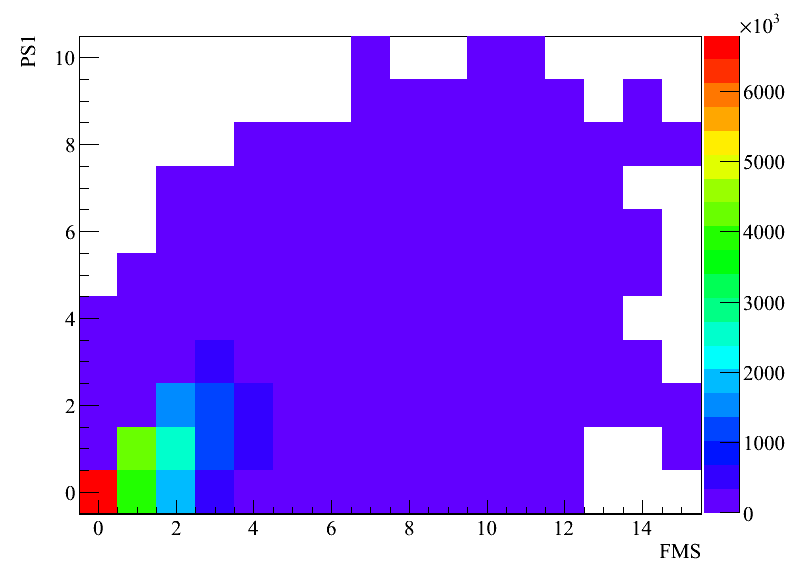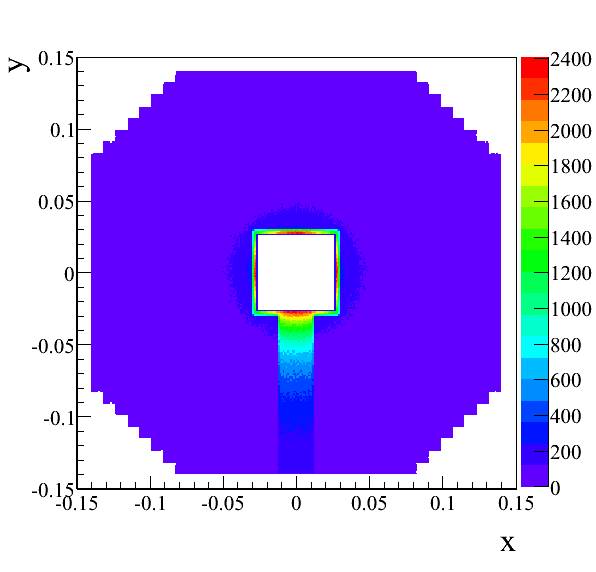- oleg's home page
- Posts
- 2024
- 2023
- February (1)
- 2022
- 2021
- 2020
- 2019
- 2018
- 2017
- 2016
- December (2)
- November (1)
- October (2)
- August (1)
- July (1)
- June (3)
- May (2)
- April (3)
- March (4)
- January (1)
- 2015
- 2014
- December (2)
- October (2)
- September (1)
- August (1)
- July (3)
- June (1)
- May (3)
- April (2)
- March (2)
- February (1)
- January (1)
- 2013
- My blog
- Post new blog entry
- All blogs
Photon identification with FMS/preshower
Photon identification with the FMS and preshower layers PS1 and PS2 is studied for perfect detectors below, i.e. the cluster in the FMS is using the PYTHIA track direction. Any charged track is assumed to leave a minimum ionizing signal in the scintillator. Other than the different longitudinal positions of the preshower layers, the multiplicities are the same for PS1 and PS2. Figure 1 shows the track multiplicities, not the detector multiplicities, in one quarter of the detector (for which the preshower channels can be matched).

Figure 2 below shows the track matching of the preshower with the FMS clusters. Coordinates are normalized to the longitudinal position of the detectors to be directly comparable (PS1_z/PS2_z/FMS_z=676 cm/678 cm/706 cm). Every cluster in the FMS is matched with all possible tracks in the preshower (per quarter). Currently, no smearing is included. Cluster positions are the impact point of the track on the FMS surface, PS1 and PS2 positions are the center of the scintillator through which the track goes. The smallest distance between matching PS1&&PS2 with the FMS cluster is plotted below, for all tracks (black), photons (red), non-photons (blue). The (large) tower size in the FMS is about 0.008, so the non-photonic distribution peaks at around half of this value (for the small towers it is about 2/3 of this).

As can be seen, photons can be well separated from charged tracks with the current granularity of the preshower layers. There is a significant non-photonic background in the above distribution which comes from areas in the FMS that are not covered by the preshower. This is the innermost section around the beampipe and the area which is covered by the new beampipe support. This is illustrated in Figure 3 below which shows the distribution of non-photonic background for distance larger than 0.007 that reaches the FMS. The majority of this background can be removed by fiducial cuts on the clusters (inner edge and beampipe shadow).

Next steps will include:
- efficiency and light yield in the preshower
- smearing of the cluster energies in the FMS
- fiducial cuts on the FMS acceptance
- study of PS3 for electron identification
- oleg's blog
- Login or register to post comments
